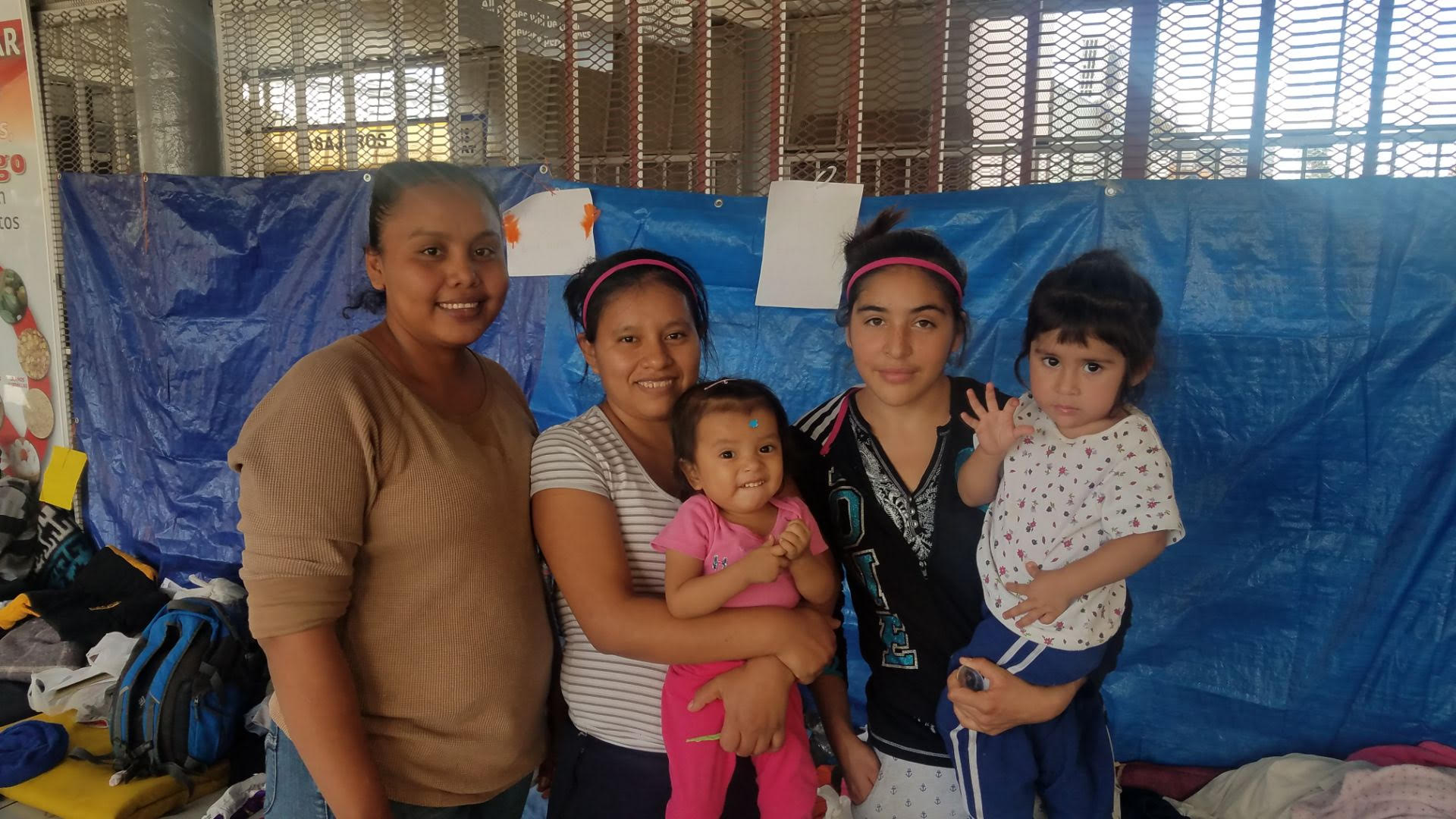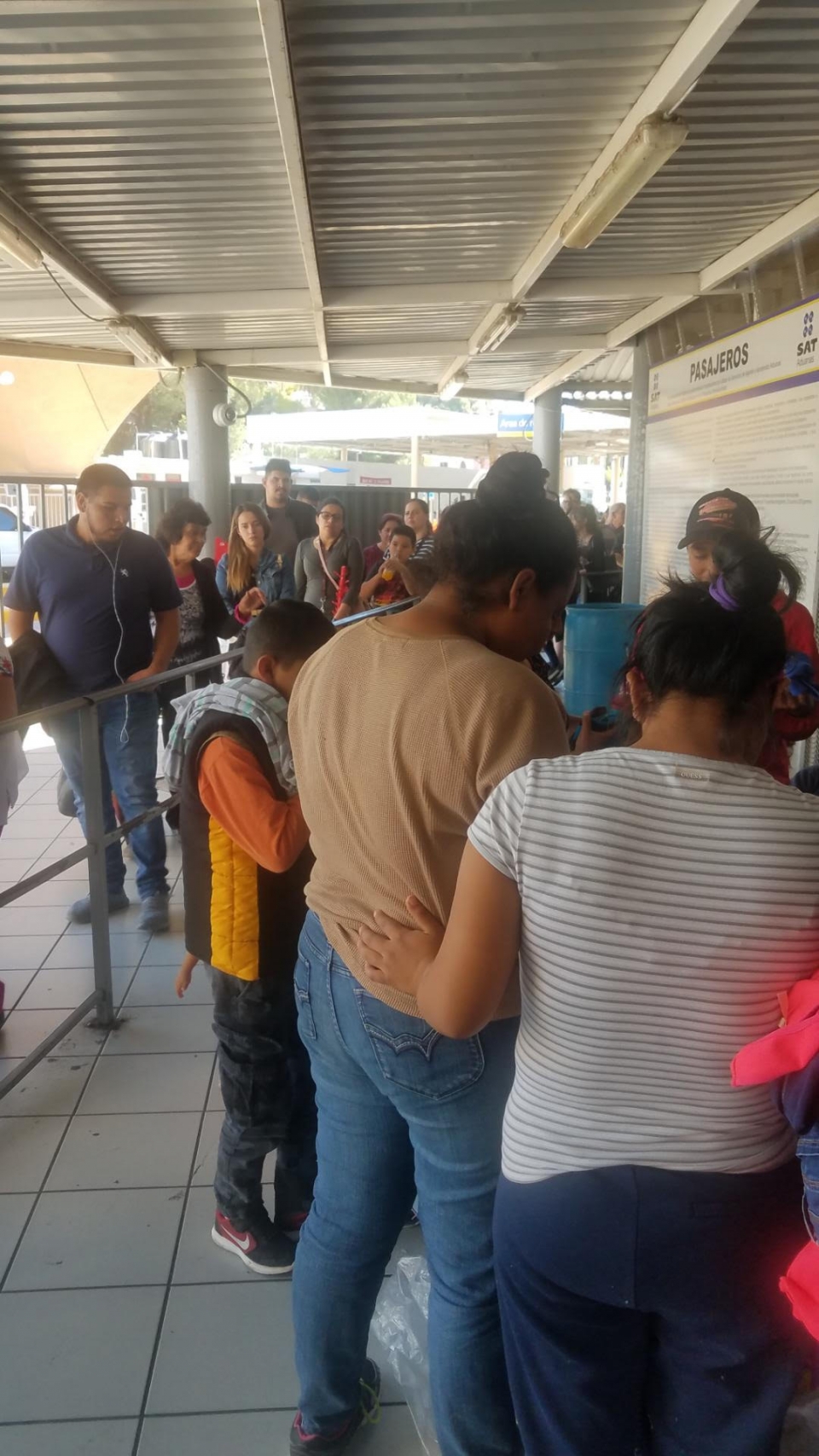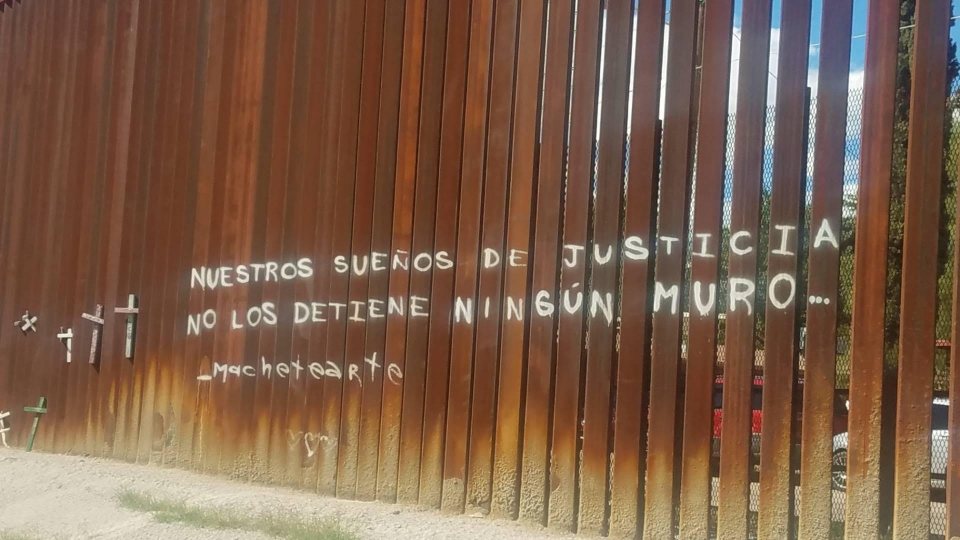
A family at the port of entry in Nogales, where migrants camp outside for days to present themselves to Customs and Border Protection to seek asylum. Jody Mashek / AFSC
I’ve worked for the American Friends Service Committee in Des Moines, Iowa since 2008, providing legal services to hundreds of immigrants and refugees every year. Last fall, I traveled to the U.S.-Mexico border as a volunteer to help migrants understand their legal rights and their options for seeking asylum in the United States.
As an advocate, I knew what was going on at the border, but it didn’t compare to what I saw with my own eyes – and heard directly from people seeking safety in our country.
I met a family from Mexico so scared for their lives that, in the span of just one afternoon, they gathered what could fit into backpacks and took the next bus out of town, leaving everything else behind. I met two young men – friends since childhood – who fled their hometown because of threats to their lives. And while the vast majority of people I spoke with were fleeing violence, I also met mothers and fathers who just wanted the chance to earn enough money to care for their children.
Throughout President Trump’s time in office, these are the kinds of people he has effectively worked to shut out of the U.S. He has demonized the caravans of migrants as they made their way through Central America, responding to people escaping violence and poverty by deploying thousands of military troops – instead of receiving them with compassion and humanity.
 In December, Trump also defended U.S. Customs and Border Protection (CBP) after it fired tear gas at a group of migrants – which included children – at the border. And he continues to enact policy changes that would make it harder for people to seek asylum in the U.S.
In December, Trump also defended U.S. Customs and Border Protection (CBP) after it fired tear gas at a group of migrants – which included children – at the border. And he continues to enact policy changes that would make it harder for people to seek asylum in the U.S.
These injustices remind me every day that we are living in a moment of truth. A time that calls us to stand with migrants – and all people who seek safety in our country.
It’s imperative that we push back against the Trump administration’s ongoing attacks on asylum and call for the U.S. to respect the human right to migrate.
Under current law, a person in the U.S. can apply for asylum – whether they entered with authorization or crossed the border between checkpoints. That’s because our asylum system recognizes that humanitarian protection is a matter of life or death.
But in November, Trump announced a devastating new rule that would block people who enter the U.S. between ports of entry from seeking asylum. A federal judge recently suspended the ban as a lawsuit over the new rule makes its way through the courts. But if Trump prevails, people arriving at the U.S.-Mexico border will be forced to choose – waiting for weeks or longer at ports of entry or crossing between checkpoints and risking deportation without being given a fair hearing of their asylum claims.
And this is just one of several recent attacks on asylum seekers. In just the past few months:
- Immigration officials have forced thousands of asylum seekers to wait in Mexico for their hearings under the misleadingly named “Migration Protection Protocols.” This program has been challenged in the courts, but for now, continues to send people back to some of the most dangerous cities in Mexico without first giving them a chance to present their cases for protection.
- The Department of Justice eliminated asylum seekers ability to post bond, meaning thousands more will languish indefinitely in detention at the same time that the administration is requesting billions of additional dollars in funding for immigrant detention, including for several new tent cities.
- The White House issued a memorandum ordering the Department of Homeland Security and Justice Department to start charging asylum seekers to apply for asylum, barring asylum seekers from getting work permits while they await a decision, and preventing asylum seekers from getting other forms of relief.
It’s hard to fathom how much Trump’s actions will exacerbate the chaos and suffering already commonplace at the border. At the Nogales port of entry between Mexico and Arizona, I talked with families waiting in line outside for days to be processed by CBP. They sat, slept, and ate on the cold, concrete floor, exposed to the elements and temperatures that dropped to 40 degrees even on an early fall evening. Organizations, churches, and volunteers do what they can, providing them with blankets, sleeping mats, and food and water.
At any given time, CBP only allows up to 10 families to wait in line at the port of entry. The agency often processes only one or two families per day.
Most migrants will wait weeks to get to even that point. When I was at the border, hundreds of families were staying in area shelters, waiting for their turn to be one of the 10 families camped out at the checkpoint to present themselves to CBP. Community organizations and volunteers maintain an informal system that tracks arrivals at the border and alerts them when it’s time to stand in line at the port of entry.

At shelters, migrants can get hot meals, donated clothes, and – if they’re lucky and the shelter isn’t overcrowded – a bed to sleep in. In some of these shelters, they also receive important information, including legal advice from staff and volunteers from various organizations.
The port of entry is where I met the two childhood friends who fled their hometown because of growing gang violence. I told them that when they presented themselves to CBP, they would likely be held in a detention center – for weeks, months, or even longer – and subject to inhumane treatment. They understood but still wanted to take their chances because anything was better than the danger they faced back home.
I also met migrants on the U.S. side of the border in Arizona who had already been processed by CBP. Many were wearing ankle monitors and would be put on buses to the homes of relatives across the U.S., where they would stay until their cases were heard. Others weren’t sure where they were going to go.
Based on my experience, I knew it would be months before any of them would learn whether they could remain in the U.S. And it pained me to know that many would not be successful in their efforts to stay.
It’s unconscionable that the Trump administration continues to undermine our asylum system – and make it even more difficult for people seeking refuge. Before I traveled to the border, I had assumed that most people I’d meet would know how asylum worked. But most of them weren’t even familiar with the term. All they knew was that they needed to find safety.
I went to the border because it was important for me to help migrants maintain some dignity as they navigated this difficult process. I was struck by how often people shared their stories with me, despite their fear and exhaustion. And I continue to be inspired by their bravery and resilience.
I know I will do everything I can to stand with migrants and work for changes to ensure all people seeking refuge are treated with the dignity and compassion that we all deserve. I hope you will, too.
More:
Tell Congress: Cut funding for ICE and CBP! For decades, Immigration and Customs Enforcement (ICE) and Customs and Border Protection (CBP) have separated families and terrorized our communities. Our federal budget should not be used to fund President Trump’s anti-immigrant agenda. As Congress and the president continue to negotiate a 2020 budget, tell your representatives: Defund ICE and CBP!
5 ways to take action against family separation: As the Trump administration ramps up its attacks on immigrant families and communities, here are some ways that join people across the country to call for immigration policies that respect rights and dignity of all people.
Speak out to protect Temporary Protected Status, Deferred Enforced Departure, and Deferred Action for Childhood Arrivals: Learn more about these vital programs and how you can join to call to create a roadmap to citizenship for all TPS, DED, and DACA recipients.